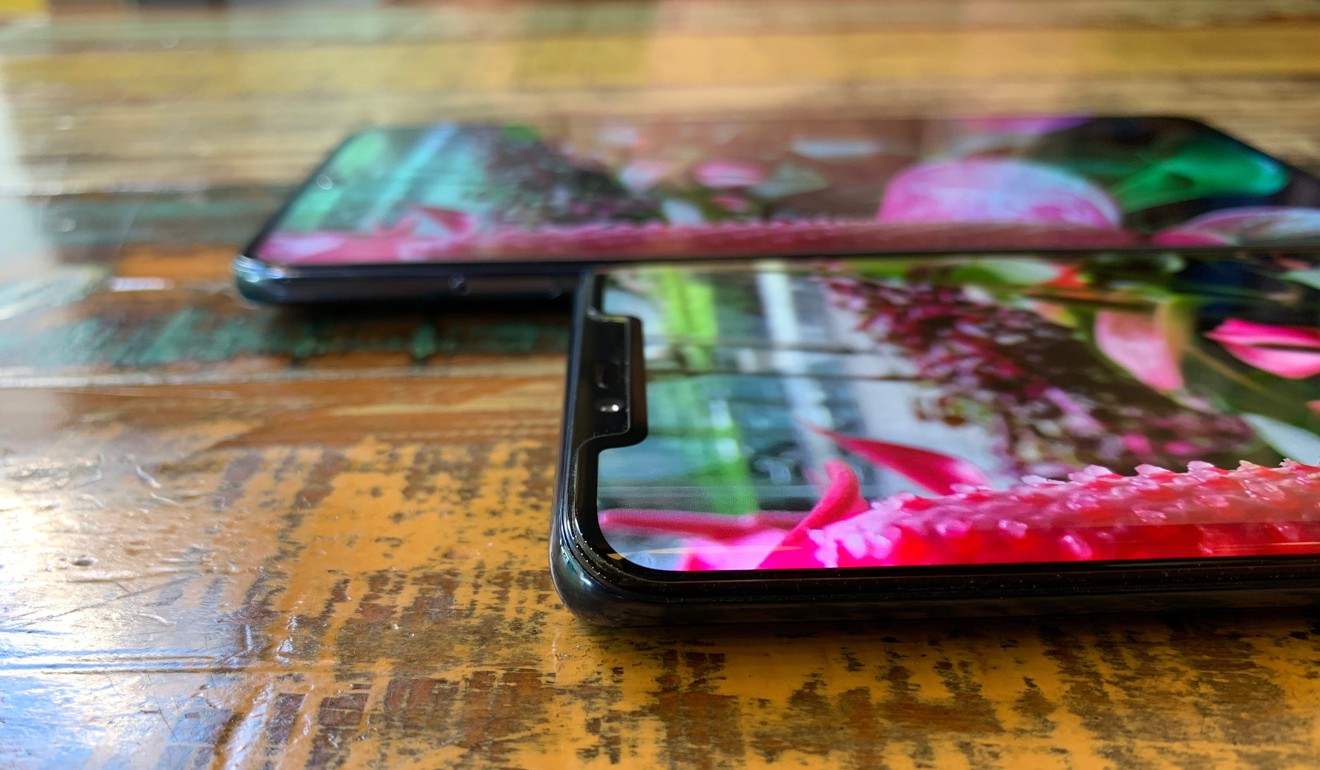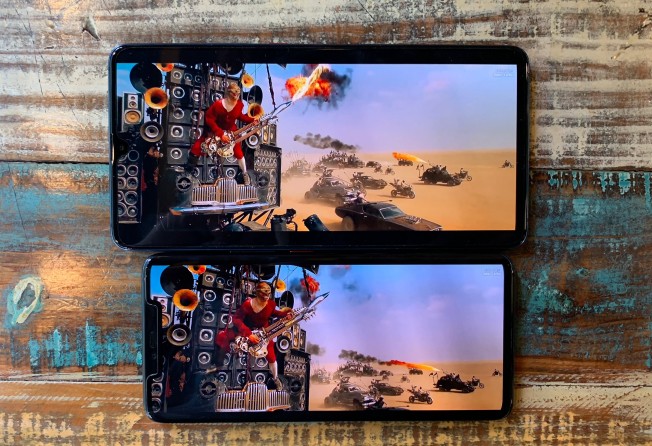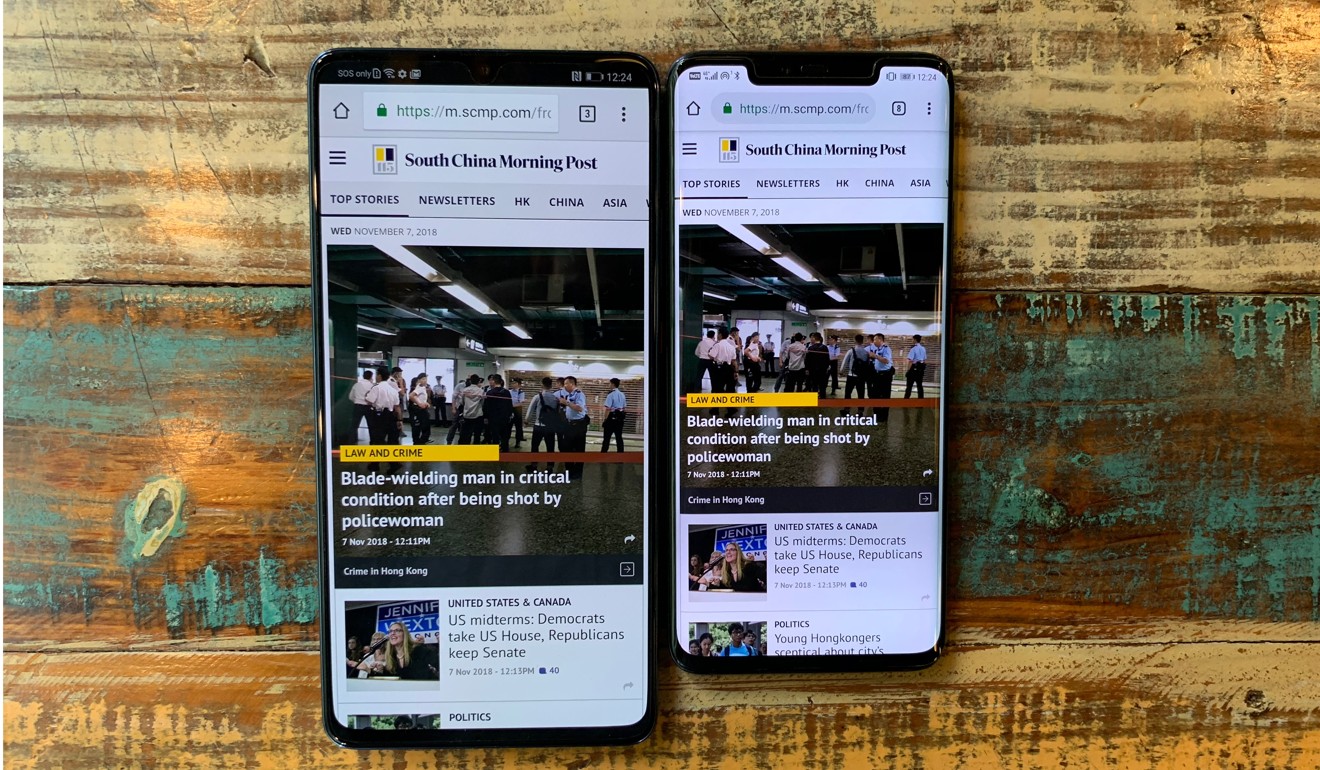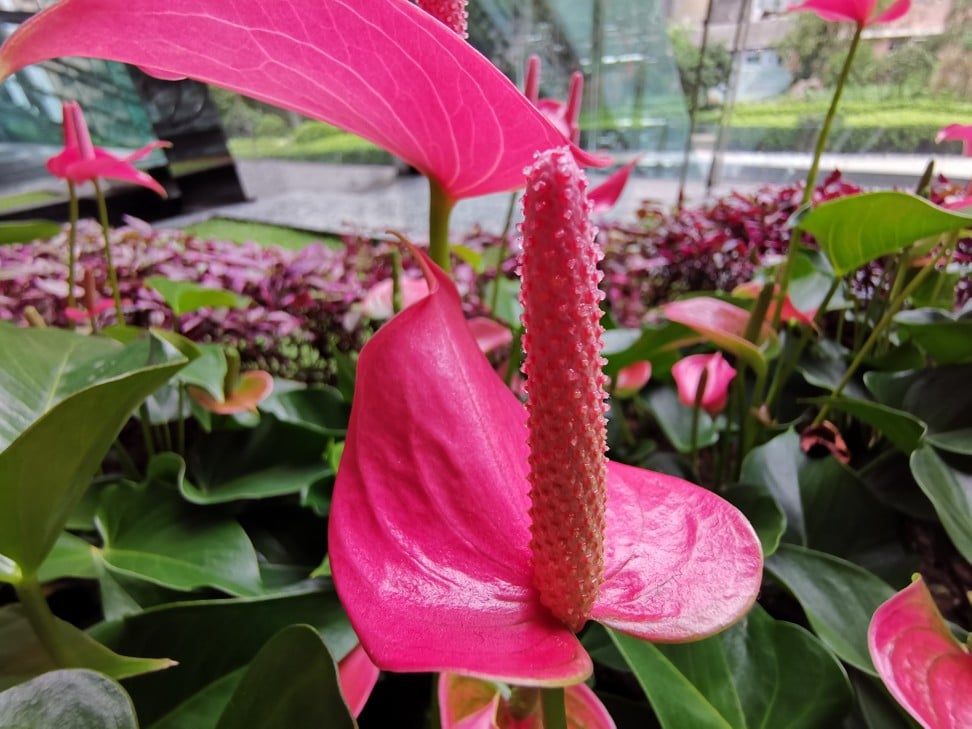
Huawei’s Mate 20 series: epic battery life, best photos – Pro and X smartphones put through their paces
- The Huawei Mate 20 Pro has no external speakers and can charge wirelessly, while the Mate 20 X is aimed at gamers and has a huge screen
- Best-in-class battery optimisation means they go a full day on a charge; video shooting not the best

Following the critical and commercial success of the Huawei P20 series of smartphones earlier this year, the Chinese company’s autumn flagship line, the Mate 20 series, packs even more features and adds a super-sized model. Will Huawei’s momentum continue?
The Mate 20 series consists of four phones: a standard model designed to appeal to the masses; a more premium “Pro” edition; a super-sized “X” phablet; and a Porsche-branded version.
The standard model is the weakest of the bunch in terms of specs, and the Porsche version is more a luxury collector’s item than a practical phone for consumers.
For this review we are focusing on the two most interesting and in-demand models: the Pro and X. The two phones are identical in the most crucial smartphone parts: they have same processor, software and camera parts, so the differences are in their physical size and less important hardware components.


Design and hardware
Let’s first cover the parts that set these phones apart. The Mate 20 Pro has a 6.4-inch OLED display with an in-display fingerprint reader, while the X sports an enormous 7.2-inch OLED panel without the finger scanning tech. The Pro’s panel is also curved on the sides (like a Samsung Galaxy phone) and has a higher, Quad HD resolution; the X has a flat 1080p panel.
The difference in resolution doesn’t matter much in real life. Only people with great eyesight watching 4K footage would be able to see the difference. Both OLED panels are sourced from Chinese display maker BOE and, surprisingly, the screens are very good, though Samsung’s OLED panels (which are used not just Galaxy on phones but also the Apple iPhone XS) still get brighter.

The Pro also has a much larger notch, because in addition to an earpiece and 24-megapixel selfie camera, it also houses an Apple-like real 3D facial scanning system for identity authentication. The X’s notch has the same selfie camera module and a wider earpiece; the model relies on a fingerprint scanner on the back for unlocking.
Because the display is flat, with more prominent sides, I find the X less slippery in the hand than the curvy Pro.
The X is positioned as a gaming/media consumption device, so Huawei gave it dedicated speaker grilles at the top and bottom of the device and a headphone jack. The Pro, meanwhile, aims to be sleek and sexy, so it has no headphone jack or visible speaker grilles – audio comes out of the USB-C port and earpiece.
The Pro’s speakers are solid, but the X’s pump out louder and fuller sound.
There is also a larger battery inside the X: 5,000 mAh compared to the already very impressive 4,200 mAh on the Pro. The Pro can be charged wirelessly, while the X needs a USB-C cable.
That’s about it for the differences. Everything else is the same. Both phones run Huawei’s new 7 nm Kirin 980 chip set, with either 6GB or 8GB of RAM. They use the same triple camera system: a 40-megapixel main lens flanked by a 16-megapixel wide-angle and an 8-megapixel telephoto lens.
The unique 2X2 square camera module and option for a gradated-colour back make the Mate 20 phones stand out from the crowd. I find the phones very aesthetically pleasing, especially the Pro with its curved display.

Software and features
The Mate 20 phones all run the latest version of Android (a coup that neither Samsung nor LG were able to achieve with their recent releases) with Huawei’s software, EMUI, on top.
EMUI offers a host of additional features, and they’re almost evenly split between weird (knock on the screen with your knuckles to grab a screenshot or launch apps) and unhelpful (an Always-On Display that does not show third-party notifications), or so useful and innovative that I wish other phone brands would copy them (“Private Space” allows a user to partition part of the phone’s storage into an entirely separate operating system with its own set of apps and settings).

The Pro offers reverse wireless charging – a previously unseen feature. It sounded gimmicky at first, but on a recent business trip, I forgot to pack a charging cable for my iPhone X, so for three days I charged the Apple phone from the Mate 20 Pro.
Performance and battery life
Huawei’s Kirin 980 chip set is super powerful for handling neural AI tasks such as processing images and videos, but it is not as finely tuned and bug-free as Qualcomm’s Snapdragon chip set. For example, recording 4K videos on the Mate 20 Pro still results in micro-jitters that are not found in videos shot on the iPhone XS or LG V40, and the game Zynga Poker would not run on any Kirin 980 devices (I’ve tried on three separate ones).

Other than these relatively minor things, the Mate 20 phones performs like a beast. They are fast, memory management is on point (apps I last used hours ago still open immediately without needing to refresh) and Huawei’s battery optimisation is best in class.
The Mate 20 Pro and X already have larger batteries than just about every other brand, but being paired with Huawei’s software has resulted in truly epic battery life. The Pro will last an entire day for almost everyone.
During testing, when I used the iPhone X and Mate 20 Pro at about the same rate, the iPhone ran out of battery at around 9pm, while the Pro would still have 35 per cent power left. And the Mate 20 X? It’s almost impossible to run the phone down in one day under any normal usage scenario. You’d have to play graphically intensive games continuously for six hours straight to drain it.

As for the cameras, I mentioned the Mate 20 phones have a weakness in 4K recording, and overall the phones’ video capabilities are below par compared to an LG or Apple phone. But for still photography? The Mate 20 Pro is arguably the best.
Like the LG V40, each of Huawei’s three lenses offers its own focal length, but Huawei’s image processing, which relies heavily on computational image processing post-shot, usually combines image information from at least two of the three lenses to produce a single shot.
This means images captured by the Mate 20 Pro and X often have a heavily processed look, as if a photo editor put them through Photoshop.
Some tech reviewers who prefer natural, realistic images have criticised Huawei’s image processing. But I love the results. Shots come out Instagram-ready, with razor-sharp details and really bold, punchy colours.

Conclusion
Considering the Mate 20 Pro and the X have very clear selling points – one is the most feature-packed phone of the year; the other has the largest screen anywhere – and are priced (in Hong Kong, at least) a clear tier below the almost five-digit asking price of new iPhones and the Samsung Galaxy Note 9, the Mate 20 series is an easy recommendation.
Dimensions: 157.8mm x 72.3mm x 8.6mm (Pro); 174.6mm x 85.4mm x 8.15mm (X)
Weight: 189g (Pro); 232g (X)
Display: 6.4-inch 1,440 x 3,120 OLED panel (Pro); 7.2-inch 2,244 x 1,080 OLED panel (X)
Battery: 4,200 mAh (Pro); 5,000 mAh (X)
OS version reviewed: Android 9.0 with EMUI 9 on top
Processor: Kirin 980
Cameras: 40-megapixel f/1.8 lens standard lens + 20-megapixel f/2.2 wide-angle lens + 8-megapixel f/2.4 telephoto lens (main). 24-megapixel front-facing lens
Memory: 6/8GB RAM, 128/256GB ROM
Price: HK$6,888 (Mate 20 Pro, 6GB RAM/128G ROM); HK$7,888 (Mate 20 Pro, 8GB RAM/256GB ROM). HK$6,088 (Mate 20 X, 6GB RAM/128GB ROM).